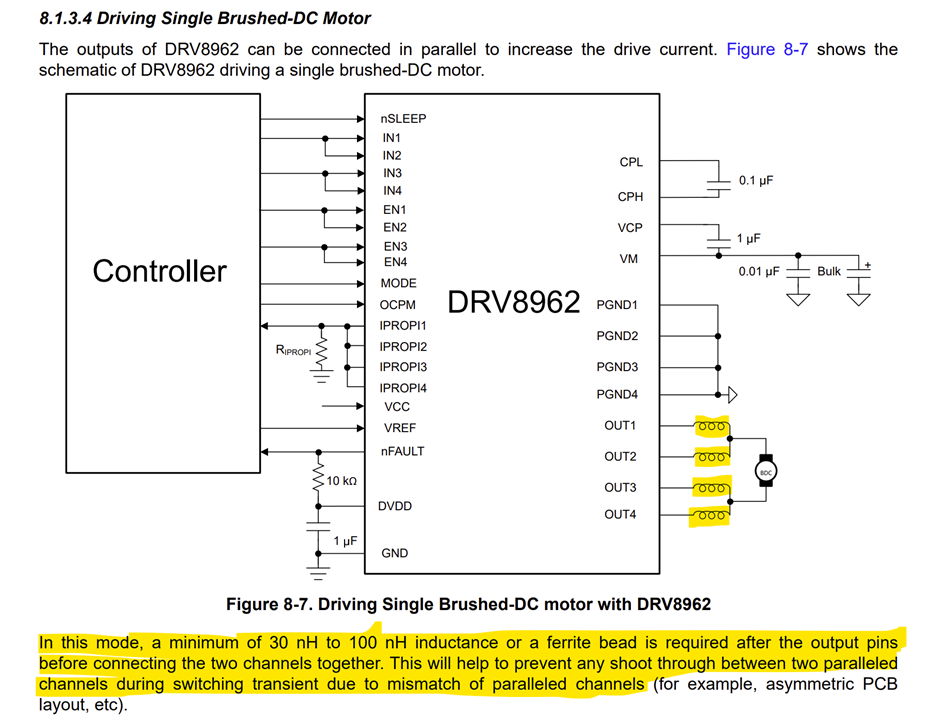Tool/software:
Hi, we are now using DRV8962 to drive a large voice coil motor (300uH, 1Ohm) with 15A peak and 6A RMS, the engineer recommended that connect a 4.7uH inductor in series before driving the motor, What the use of this inductor and do we really need this small inductor?
BTW, what's the use of the shunt RC in series?
Thanks!





